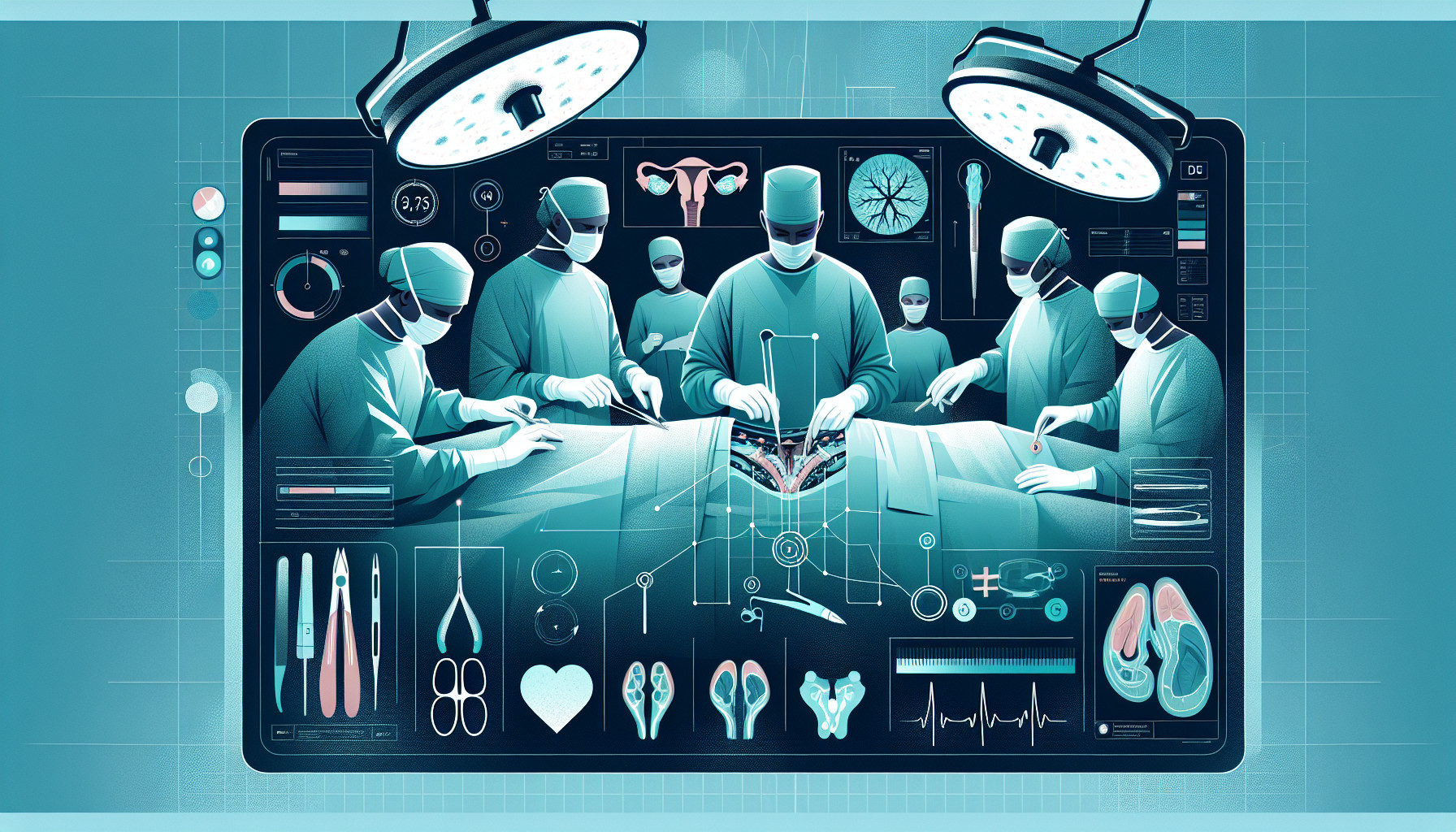Our Summary
This research paper is about a study done on the use of robots in a type of surgery for testicular cancer known as Retroperitoneal Lymph Node Dissection (RPLND). The study aimed to compare the results of robot-assisted RPLND with the traditional laparoscopic and open approach surgeries. The researchers looked at previous studies that reported outcomes of robot-assisted RPLND for testicular tumors at a certain stage.
The study included data from 11 other studies, involving 116 patients. After an average of 21.2 months, no cases of cancer recurrence in the area were reported. The median number of lymph nodes removed was 22.3, and cancer was found in 26% of them. Only 8% of the patients experienced complications.
The results showed that the robot-assisted surgery had similar outcomes to the laparoscopic approach, but it was better than the open surgery when it came to parameters measured during or immediately after the operation.
In conclusion, the study found that robot-assisted RPLND was a safe and effective method for treating testicular cancer at a certain stage, but more research is needed to confirm these findings and determine the benefits of using a robotic approach.
FAQs
- What is Retroperitoneal lymph node dissection (RPLND) in testicular cancer treatment?
- How does the Robot-assisted RPLND (RARPLND) in managing testicular tumors compare with laparoscopic and open procedures?
- What are the outcomes and complications of RARPLND in the treatment of stage I-IIB testicular tumors?
Doctor’s Tip
A helpful tip a doctor might tell a patient about testicular surgery, specifically Robot-assisted RPLND, could be to follow all post-operative care instructions provided by the medical team, including proper wound care, activity restrictions, and attending follow-up appointments to monitor for any complications or recurrence. It is also important to communicate any concerns or changes in symptoms to the healthcare provider promptly.
Suitable For
Patients with testicular cancer who have stage I-IIB disease are typically recommended testicular surgery, specifically retroperitoneal lymph node dissection (RPLND). This procedure may be recommended in combination with active surveillance or chemotherapy. Robot-assisted RPLND (RARPLND) is a newer approach that is being increasingly used and has shown promising results in terms of relapse-free survival, nodal yield, and complication rates. Studies have shown that RARPLND is comparable to the laparoscopic approach and may outperform the open procedure in perioperative parameters. Further research is needed to confirm these findings and determine the potential benefits of the robotic approach in patients with testicular cancer.
Timeline
Before testicular surgery:
- Patient is diagnosed with testicular cancer through physical examination, blood tests, and imaging studies such as ultrasound or CT scan.
- Treatment options are discussed with the patient, including surgery, chemotherapy, and active surveillance.
- If surgery is chosen, the patient will undergo preoperative evaluations and preparation, including blood tests, ECG, and possibly a chest X-ray.
- The patient will be instructed on preoperative fasting and medication instructions.
After testicular surgery:
- Following surgery, the patient will be monitored closely for any complications such as bleeding, infection, or blood clots.
- Pain management will be provided to the patient as needed.
- The patient will be advised on postoperative care, including wound care and activity restrictions.
- Follow-up appointments will be scheduled to monitor recovery and assess for any signs of recurrence or complications.
- Depending on the stage and type of cancer, further treatment such as chemotherapy or radiation therapy may be recommended.
What to Ask Your Doctor
Some questions a patient should ask their doctor about testicular surgery include:
- What are the benefits of Robot-assisted RPLND compared to laparoscopic and open approaches for my specific case?
- What are the potential risks and complications associated with RARPLND?
- How long is the recovery period after RARPLND and what can I expect during the recovery process?
- Will I need any additional treatment or follow-up care after RARPLND?
- What is the success rate of RARPLND in terms of relapse-free survival and nodal yield?
- Are there any alternative treatment options available for my testicular cancer?
- How experienced are you in performing RARPLND and what is your success rate with this procedure?
- Will I need to make any lifestyle changes or adjustments after RARPLND?
- How will RARPLND affect my fertility and sexual function?
- Are there any long-term effects or complications I should be aware of after RARPLND?
Reference
Authors: Tselos A, Moris D, Tsilimigras DI, Fragkiadis E, Mpaili E, Sakarellos P, Vailas M, Shah KN, Papalampros A. Journal: J Laparoendosc Adv Surg Tech A. 2018 Jun;28(6):682-689. doi: 10.1089/lap.2017.0672. Epub 2018 Feb 23. PMID: 29474141
